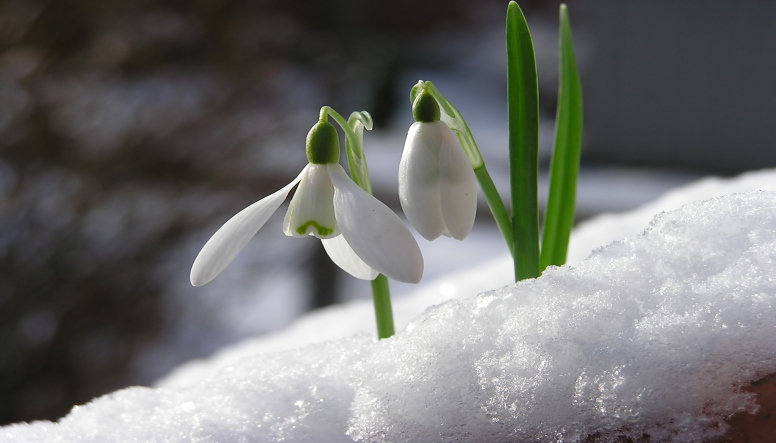Get Your Yard Ready for Spring
Plan your return to your outdoor living space (Video)

Visit your local garden center for beautiful flowers, shrubs, trees and more.
LoveYourPlants.org is brought to you by AmericanHort, in partnership with the National Association of Landscape Professionals.

Don’t wait until spring arrives to get ready for gardening. There’s much that can be done during the winter to give your garden a head start on the season, including designing new beds, ordering new plants, starting seeds and forcing bulbs, and even pruning and shaping shrubs ahead of the new growth.
During the winter months, there are two types of gardeners: Those who are fortunate to garden outside, and those who are fortunate to plan to garden outside. These long months following the holidays may seem claustrophobic for gardeners who are eager to get out and dig, but it’s a good time to slow down, tap your resources, and plan your strategy. You might even want to visit your local garden center and talk to the experts who can help guide you through the planning process. If you organize now, plan in hand, you’ll know just what you need to make your garden the best it can be.
Starting indoors.
If you’re stuck inside during the winter, you might as well put pencil to paper and organize your thoughts—and your future garden. (If you’re iPad proficient, there are hundreds of apps that will help, too.)
Here are a few tips to get you started:
Venturing outdoors.
If the weather permits, it’s a good idea to check on your garden. Winter can be a challenge for even the hardiest of plants. When snow cover is insufficient, frigid temperatures can take a toll on groundcovers, perennials, and grasses. When snow cover is plentiful, hungry rodents may burrow beneath the drifts to find tempting bark. And as the snow melts, it’s not unusual to discover that the bark of small trees and shrubs has been nibbled or gnawed. Larger animals may cause winter damage by stripping bark and buds from branches.
Frigid winter winds can desiccate plants, and salts used to melt sidewalk or roadway ice can burn both needled and broad-leaved evergreens.
Winter care sounds daunting, doesn’t it? But it needn’t be. There are easy steps to take to ensure your plants survive—and thrive—through the winter.
Bringing the outside in—a bonus!
Flowering trees and shrubs may require selective pruning before spring, and if you’re able to get outside to help shape those plants, save the branches you remove. Bring them indoors and force them into bloom for a welcome spring preview.
It’s safest to prune when the temps rise above freezing—and you don’t want to be outside when it’s colder, do you? Always use proper pruning procedures, and take care to select branches whose removal won’t jeopardize the natural shape of the plant. Cuts longer than 12 inches respond best to forcing.
Soak the branches in tepid water for several hours—overnight is convenient—and then score the ends to remove any callus that may have formed. This will allow water to flow freely up the branch.
Place the branches upright in a bucket or vase filled with several inches of water, and store them in a relatively cool room out of direct sunlight. Be sure to change the water frequently. Within a few weeks, you’ll see that the buds are starting to swell.
Nonflowering branches can be forced, too, and the emerging foliage adds a natural companion to delicate spring blooms.
A lot can be involved in preparing your yard for the spring, consult a landscape professional to ensure you're ready for the seasons ahead.
We recently updated our Privacy Policy. By continuing to use this website, you acknowledge that our revised Privacy Policy applies.